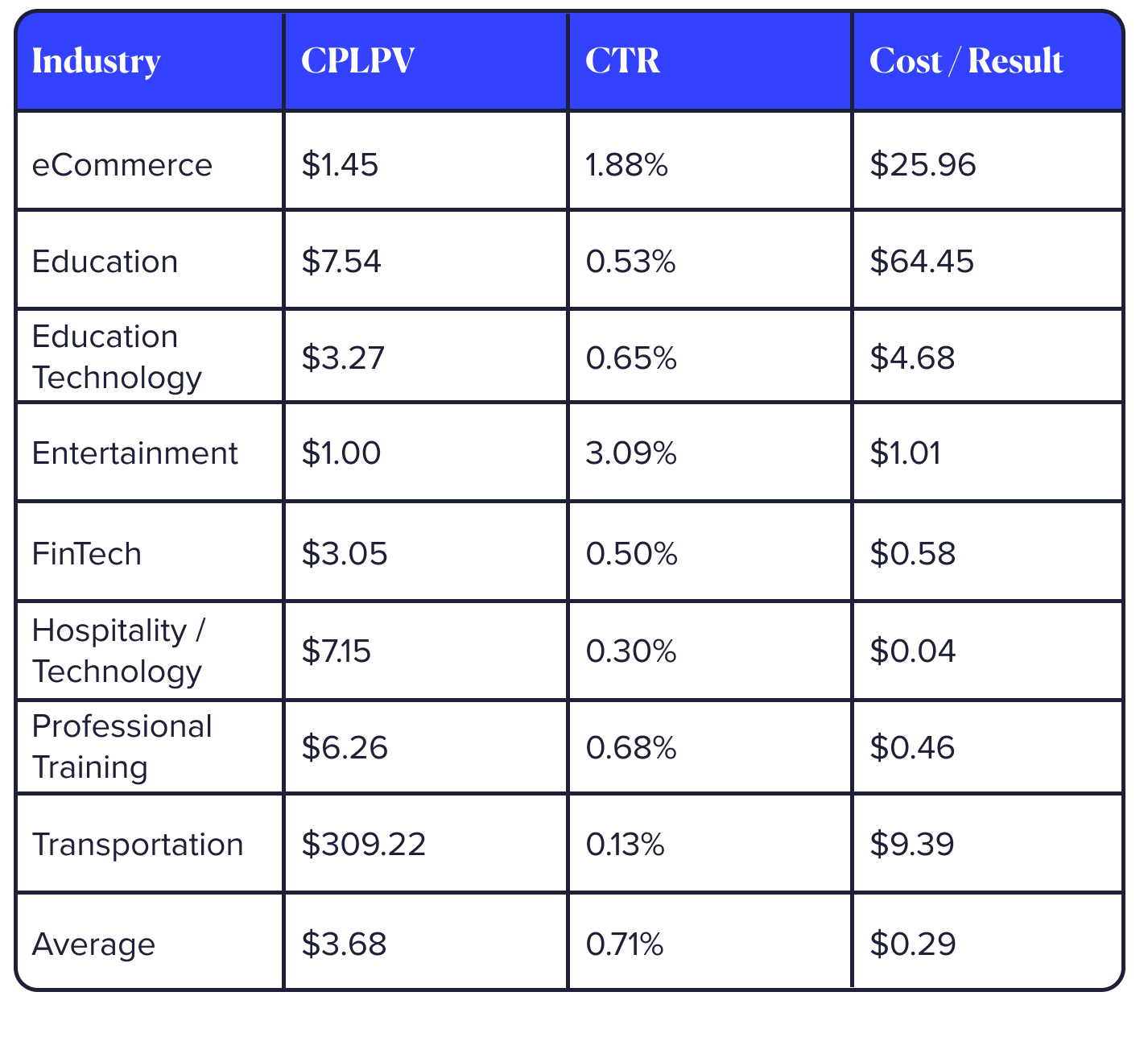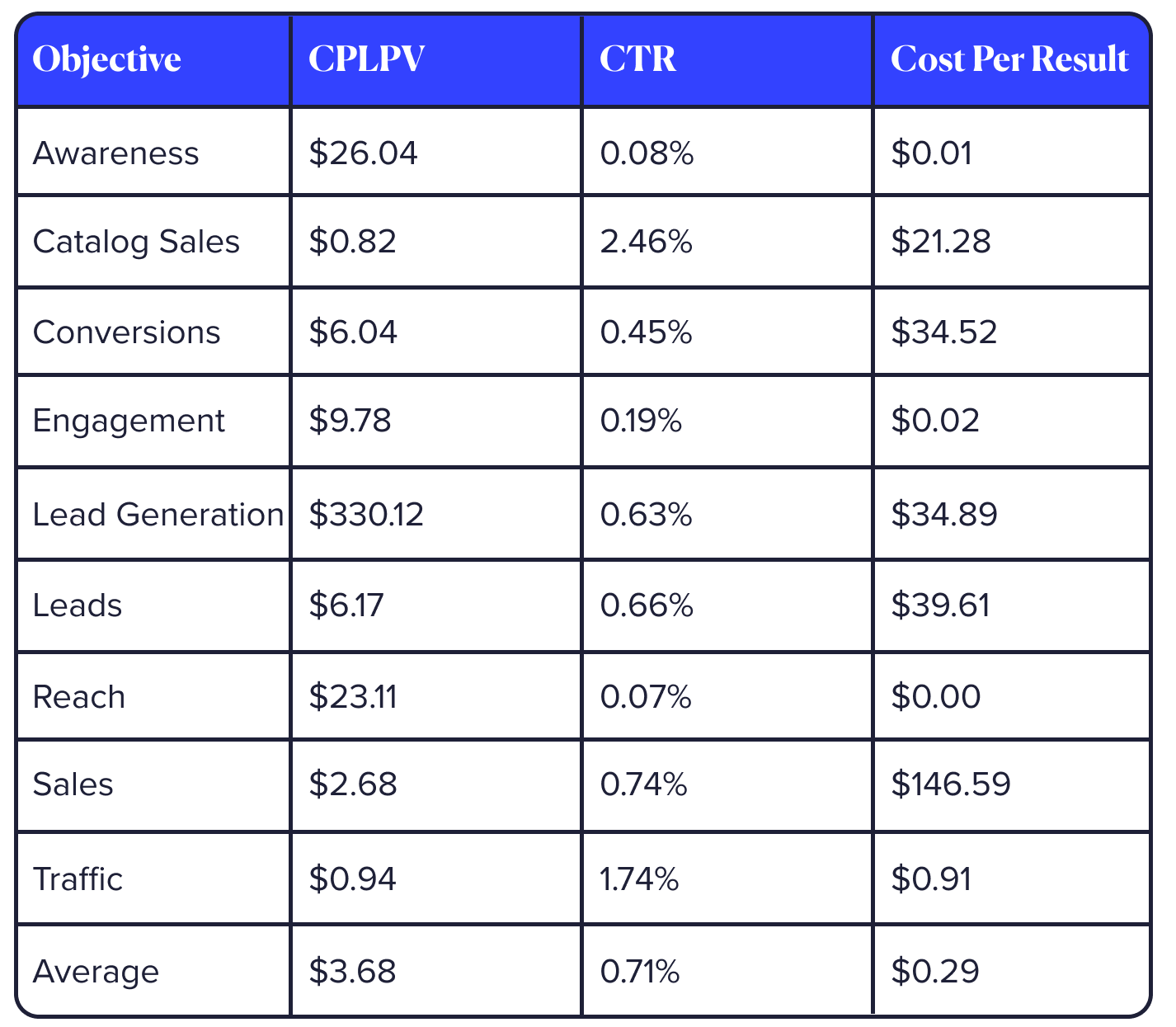2024 Facebook Advertising Guide
Facebook recently surpassed a monumental 3 billion individual users in 2023. In the past year, the advertising platform has undergone a series of transformations, ranging from subtle refinements in the Ads Manager interface to more substantial overhauls, such as the revamping of their campaign objectives. Whether the changes are small or large, Facebook consistently adapts its advertising platform to remain at the forefront of innovation.
Drawing from our experience of these changes over the years, Tuff is here to equip you with the insights and strategies needed to navigate the forthcoming year.
Welcome to the 2024 Facebook Advertising Guide, where we delve into the ever-shifting realm of Facebook advertising and provide you with a glimpse of the strategies that will define the year ahead.
Facebook Ads Landscape in 2024
A Bird’s Eye View: How Facebook Ads Have Transformed
Facebook is constantly evolving many aspects of its advertising platform–from smaller changes like elements of the Ads Manager interface to larger changes like removing certain targeting options or introducing new placement features. Over just the past three years, we’ve encountered changes that have made a serious difference on the platform, such as:
- The switch to standard events and Aggregated Event Measurement with the release of Apple’s iOS 14.5 in early 2021
- The restriction of viewing ad metric reporting limited to the preceding 37 months
- The removal of several detailed targeting options including sensitive options referencing health, race or ethnicity, political affiliation, religion, or sexual orientation
- The introduction of Facebook/Instagram Reels, a new video-first format
In addition to these specific changes, Facebook has also been moving to Meta Advantage products. These tools automate certain aspects of your ad campaigns, making the most of AI to optimize the value of your advertising investments and the visibility your ads receive.. Advantage+ placements replaced Automatic Placements; Advantage+ campaign budget replaced Campaign Budget Optimization; Advantage+ catalog ads replaced Dynamic Ads; Advantage+ detailed targeting replaced detailed targeting expansion. And those are only a few of the ways Facebook is moving toward automatic options.
Key Trends and Predictions: What Marketers Can Anticipate
Facebook has already started announcing other changes rolling out next year, including simplified campaign objectives, which will be introduced in early 2024. While Facebook has updated its campaign objectives before, this is significant because they will streamline the existing eleven objectives into six new ones: sales, leads, engagement, app promotion, traffic, and awareness. Some of the objectives that are being phased out will become optimization tactics that you can select within the new objectives.
Marketers can anticipate Facebook to keep moving toward a more user-friendly ads platform, one that includes more AI-related features. The Advantage products have given us a taste of how AI can be of use on the platform, but Facebook is also beginning to release generative AI-powered features for ad creatives that will be fully rolled out in 2024. The intent is for these features to “unlock a new era of creativity that maximizes the productivity, personalization and performance for all advertisers.” Put simply – Facebook is jumping on the capabilities of AI to make life easier for advertisers. They aim to be the go-to platform for those looking to promote their products or services.
The New Normal: Ad Costs, Competition, and User Behavior
You’re probably asking yourself, “How much do Facebook Ads cost?” or “How will I stay competitive?” These are great questions, and we’ll provide some guidance throughout this article.
At Tuff, we analyze performance data from all of our partners every quarter to create updated benchmarks of what we’re seeing across industries. Here is the latest data we’ve found:
2024 Facebook Advertising Benchmarks by Objective
2024 Facebook Advertising Benchmarks by Industry

Ready to keep diving into the nitty-gritty of what you can expect from Facebook Ads in 2024?
Granular Facebook Targeting
2024’s Advanced Targeting Options
There are a multitude of targeting options available on Meta. You can drill down on your Ideal Customer Profile (ICP) by location targeting and detailed targeting. Digging into what these options entail…
- Location Targeting: This includes the ability to target users by their country, region or city (or have recently visited).
- Detailed Targeting: This is comprised of age ranges, genders, languages, demographics, interests, behaviors, and custom audiences.
- Age Ranges: Users ranging from 13-65+
- Genders: Women, men, or people of all genders
- Languages: Specific languages to accommodate localization strategies
- Demographics: Education, employment, household, and lifestyle details
- Interests: Interests, activities, the Pages they have liked, and closely related topics
- Behaviors: Purchase behaviors or intents, device usage, and more
- Custom Audiences: Users who have already shown an interest in your business or product – You can choose from your owned sources (website data, app activities, catalogs, customer lists, offline activities) or from Meta sources (video engagement, lead forms, instant experiences, shopping, FB/IG accounts, events, on-Facebook listings)
- Pssst, custom audiences are the sources that lookalike audiences are created from!
Let’s go a step beyond what Meta offers on paper and talk through how you might get creative and put these into use in a campaign for your business.
Beating the Competition: Leveraging Unique Targeting Strategies
There are many components of a successful Meta campaign. Your targeting strategy is a huge piece of the puzzle when it comes to getting in front of the right audience.
At the end of the day, you could be optimizing your campaign for the right objective and have the best creative assets – But if you’re not targeting the right audience, you’re never going to see the results you want.
Let’s chat through how you might use unique targeting strategies to get in front of the right audiences and beat your competitors.
Prospecting
- Interests and behaviors
- Instead of targeting: Health and wellness interests and engaged shoppers behaviors
- Think: Health and wellness interests narrowed by engaged shoppers behaviors
- Lookalike audiences
- Instead of targeting: LAL off of past purchasers
- Think: LAL off of past purchasers with a higher-than-average product price
By implementing these modifications in your prospecting strategy, you can enhance your chances of reaching audiences with a stronger interest in your products or services and increase the potential for conversions.
Retargeting
- Custom audiences – Your sources
- Instead of targeting: Website visitors
- Think: Website visitors of a specific landing page with a frequency of 2+
- Custom audiences – Meta sources
- Instead of targeting: All video viewers
- Think: People who have either completed or viewed at least 15 seconds of videos in a specific prospecting campaign
These improvements mean you can optimize your ad campaigns to reach users who have demonstrated a higher level of engagement and interest in your brand, increasing the likelihood of conversion.
By drilling down more specifically on these targeting options, you should be able to:
- Allocate your ad dollars towards the most qualified users
- Increase your ad frequency, brand awareness and recall
- Pair specific creative messages and assets with specific audiences
- Increase conversions, improve CPAs and strengthen CVRs
Transitioning to the next section, we’ve covered the significance of unique targeting strategies and the optimal management of ad frequency. Now, let’s dive into setting up a robust testing framework, followed by measuring and scaling the results of your Facebook ad campaigns for success in 2024.
Optimizing Your Facebook Ad Campaigns
Pro Tips: Effective Use of Facebook Pixel in 2024
As you begin your journey with Facebook advertising, one of the first things to do is to set up a pixel in your ad account and place it on your website or app.
You can do this in a few ways, such as placing it via a tag manager, like Google Tag Manager, or placing it directly in the header of your website. You can make sure that it’s firing effectively on your website by using Preview mode of Google Tag Manager or installing the Meta Pixel Helper Chrome extension. Facebook also offers a Testing Tool you can utilize in Events Manager!
Once your pixel is placed, you can begin setting up either standard events or custom conversions (events) to track specific actions happening on your site, such as page views, add to carts, purchases, leads, or registrations completed.
Facebook offers a default list of standard events that you can readily configure to match activities on your website. . But if the action you want to track isn’t on that list, you have the option to create custom events, such as tracking button clicks, form submissions, or interactions with unique features.
We may find advertisers beginning to utilize these custom events even more in 2024 now that Facebook no longer requires you to lean on the standard events and prioritize them to your pixel (this was a process that was rolled out when iOS 14.5 was released a few years ago).
After your pixel is correctly placed and events are configured, you can start gathering data about visitors coming from your ads and monitor their activities on your website. You can also startbucketing them into your retargeting audience to serve ads to them again later.
Ad Frequency Matters: Striking the Perfect Balance
Facebook’s ad frequency metric refers to the average number of times a particular ad is shown to a unique user within the timeframe you’re looking at in Ads Manager. TLDR – the amount of times someone is seeing the exact same ad of yours. And while showing the same ad to the same user is a good thing and necessary to break through the noise, it can also be a negative thing if your ad frequency is too high. Ad fatigue happens when individuals encounter an ad so often that they begin to ignore it and simply pass it by without paying much attention.
If your ad frequency is too low, it can result in fewer conversions and a higher CPA because people don’t see your ad often enough to generate interest and take action. Conversely, having a too high ad frequency can lead to a lower click-through rate because some people might not be interested in clicking, despite repeatedly seeing your ad, resulting in more impressions but fewer clicks.
Our general guideline is to maintain an ad frequency between 1 and 6.
The ideal frequency depends on several key factors:
- Number of Ads: If you’re running multiple ads in your campaign, you’ll have a more extensive pool of creatives to show to your audience. This naturally keeps individual ad frequencies from becoming excessively high.
- Audience Size: In smaller audiences, there are fewer people to show your ads to, so the same individuals are more likely to see them repeatedly, potentially leading to a higher frequency.
- Budget: A higher budget enables you to generate more impressions, which can, in turn, lead to a higher frequency.
- Creative Quality: If your creative content is of low quality or hasn’t been updated in a while, this can result in a higher frequency, contributing to ad fatigue.
Facebook used to offer a cap that you could set for frequency to limit the number of times the same user saw your ad, but this feature is no longer available. We recommend you monitor this metric on your campaigns and individual ads closely, and if you find that your frequency is approaching the high end of the recommended range, you make optimizations such as refreshing your creative, layering more ads in, expanding your audience, or adjusting your budget.
Testing Framework
Now that we’ve talked about some of the most important components of a successful campaign, let’s dive into how to set up a solid testing framework to get the results you’re looking for.
To get the most out of all of your tests, it’s important to isolate variables. Whether you’re testing campaign objectives, bid strategies, audiences, messaging options, creative assets, different calls-to-action, or landing pages, it’s crucial to focus your attention on one to get the cleanest and most accurate results.
If you want to determine which campaign objectives are best for your business, you might structure a test like:
- ⭐ Optimize for different campaign objectives ⭐
- Allocate the same budget and bidding strategy
- Use the same key audiences
- Run for the same length of time
- Test the same creative assets, messaging or CTAs
If you want to determine which key audiences are best for your business, you might structure a test like:
- Optimize for the same campaign objective
- Allocate the same budget and bidding strategy
- ⭐ Test different key audiences and tailored creative / messaging ⭐
- Run for the same length of time
If you want to determine which creative is best for your business, you might structure a test like:
- Optimize for the same campaign objective
- Allocate the same budget and bidding strategy
- Use the same key audiences
- Run for the same length of time
- ⭐ Test different creative assets, messaging or CTAs ⭐
Logistically, you can use Meta’s A/B testing functionality in-platform to minimize competition (against yourself!) – Specifically if you’re testing audiences.
You’re not limited to just an A/B test – You can test up to five campaigns or up to five ad sets against one another. If you want to test different ad designs or messaging, it’s a good idea to separate this process into different ad sets. This allows you to focus on the most important groups of people, making sure you get the most value out of your advertising budget.
Something like this:
This structure ensures you’re focusing on the variations between creative vs. grouping them altogether in one ad set and having the algorithm dedicate all of the budget toward one variation.
Analytics: Measuring and Scaling
Choosing how to optimize your campaigns successfully is arguably the most important piece of the puzzle – Measuring your results success rate and scaling what worked. If something’s working for your brand, you want to be able to replicate it, iterate upon it, and continue to test and learn new things (the cycle never ends!).
Starting with measuring results – We typically think about campaigns in two buckets:
- Brand – Building your brand, whether that is with awareness or recall
- Performance – Driving specific results
With brand campaigns, we’re focused on top- and mid-funnel metrics like impressions, CPM, landing page views, cost per landing page views (CPLPV), click-through rates (CTR), ThruPlays, ThruPlay Rates, and ad frequency. Whereas, with performance campaigns, we’re focused more so on bottom-funnel metrics like conversion volume, cost per conversion, conversion rate, return on ad spend (ROAS), and revenue.
Once you’ve determined what works, you’ll get to work on scaling it. For scaling, we also think about this in two buckets: Scaling vertically or horizontally.
- Vertically – Pump more money into what you know works, aka existing campaigns.
- Horizontally – Identify opportunities outside of what you know what works, aka new audiences or creative.
While vertical scaling may initially appear to be cost-effective, long-term success often comes from horizontal scaling, which opens up new opportunities and growth potential for your campaigns. With a strong foundation in measuring, optimizing, and scaling your campaigns, let’s now delve into the specific ad formats available in 2024, examining their advantages and disadvantages.
2024’s Facebook Ad Formats: Pros and Cons
Now, let’s dive into the world of Facebook ad formats in 2024. In the section below, we’ll break down the pros and cons of each format to help you make informed decisions about your advertising strategy. It’s all about finding the right fit for your business and making the most of your marketing efforts. Let’s get started!
Ad Type |
Pros |
Cons |
|---|---|---|
Image AdsClassic and straightforward format for eye-catching visuals. |
|
|
Video AdsEngaging format for detailed storytelling and capturing attention. |
|
|
Carousel AdsShowcase a series of images or videos for multiple products or storytelling. |
|
|
Collection AdsIntegrates visuals and product catalogs for easy exploration and purchase. |
|
|
Messenger AdsEstablish a personal connection and educate the audience through interactive messaging. |
|
|
Stories AdsDynamic vertical video format blending with user-generated content in mobile app Stories. |
|
|
The Future of Advertising on Facebook
Facebook is always introducing new features to continue growing and engaging its user base. There are countless opportunities for all different brands to show up strategically, build their brand presence, and ultimately increase profitability.
If you’re wondering where to start, what to focus on, or what your advertising journey might look like on Facebook, then hit us up! Our team of paid social experts is here to assist you. We have the experience, expertise, and creative chops to supercharge your campaigns. We’ll ensure your brand stands out amidst the digital noise.

Hi there — I’m Kate, a Social Ads Strategist based in Knoxville, TN. I have over four years of experience in social media, focused predominantly on paid social media planning and buying. When I am not at my computer, I am likely hanging out with my dog, Benji, or cooking up something good in the kitchen.







